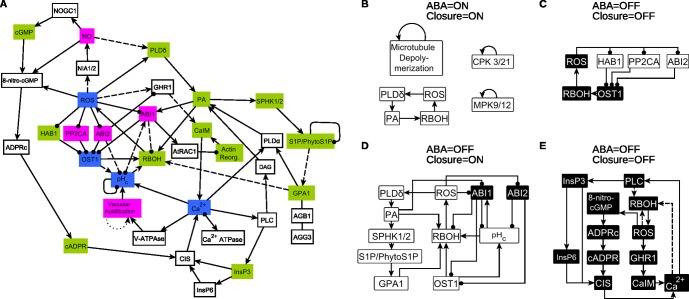Fig 2. Feedbacks play a key role in the structural and dynamic properties of the abscisic acid (ABA)-induced stomatal closure network.
A. The network’s strongly connected component (SCC) comprises almost half of the nodes and more than two-thirds of the edges; it contains both positive and negative feedback loops. Nodes with a light green background are affected by nodes in the in-component, nodes with a blue background regulate nodes of the out-component, and nodes with a pink background interact with both the in-component and the out-component. The dashed edges indicate edges inferred during our network construction process. Even if all dashed edges were removed, 26 nodes would remain in the SCC. The dotted edge indicates a positive self-regulation inferred during the construction of the dynamic model. The nodes that make up the in-component, the SCC, and the out-component are listed in S4 Table. B-D. Stable motifs determine the final outcome (attractor) of the network. The node background indicates the stabilized state of the node; white represents 1 (ON) and black represents 0 (OFF). All stable motifs that are not self-loops are subsets of the SCC. B. Stable motifs associated with closure in response to sustained ABA. C and E. Stable motifs associated with lack of closure in the absence of ABA. The stable motif in E has 3 variants that share all the nodes and all the solid edges. Each variant also includes 2 to 6 additional nodes and 4 to 8 additional edges, which form additional feedback(s) and can be summarized as the indirect relationships shown as dashed edges. D. Stable motif associated with closure in the absence of ABA. Stabilization of this motif requires that Vacuolar Acidification first stabilizes in the ON state; this does not happen in any of the trajectories that start from our assumed initial condition representative of open stomata.

